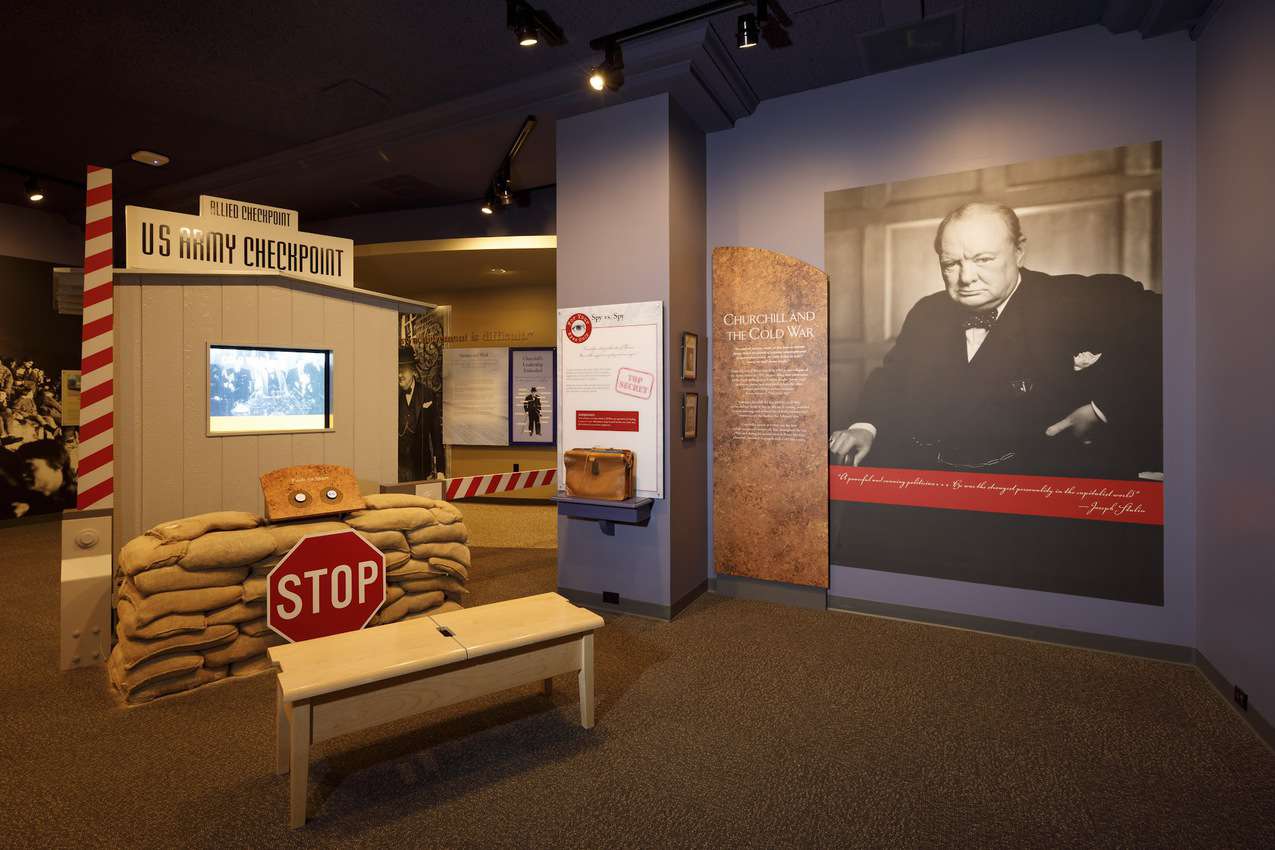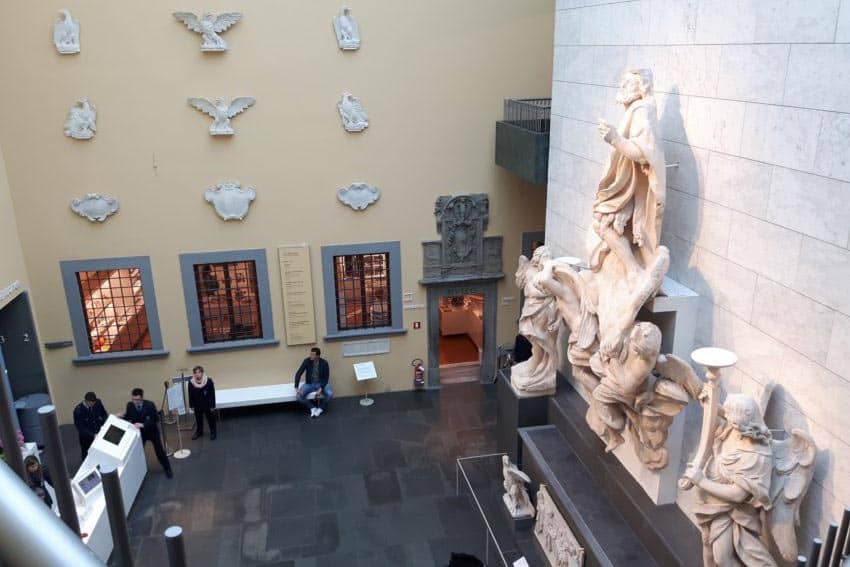
Museo Galileo on the Waterfront near Piazza dei Guidici in Florence
By Taylor Owens
Florence, Italy is home to several different attractions that draw the eyes of tourists everywhere. The Cattedrale di Santa Maria del Fiore (the Duomo Florence), the Uffizi Gallery, and the Galleria dell’Accademia, for example.
On one of the first days I spent in Italy, my group and I got up early to head to the Rome train station. There we caught the train to Florence to spend the day touring and seeing the sites.
On the Train
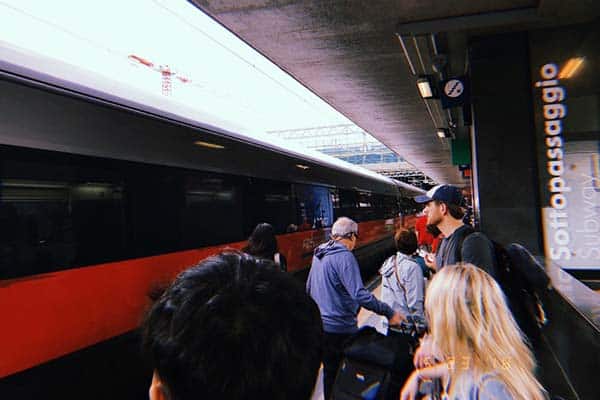
We started our day in Florence expecting to be able to take a tour of the Florence Duomo and then make our way to the Galleria dell’Accademia to see Michelangelo’s David later on.
Approaching the Florence Cathedral was a bit of a fuss, and we found out that all of the tickets to go on a tour were sold out.
We quickly nixed that idea, and we made our way to the Galleria to see David. Upon arrival, it wasn’t hard to see that the lines looked like they would take hours for us to work our way through.
After speaking with an attendant, we found out that the line for entry into the museum was going to take up to four hours. It was discouraging to be in a city with plentiful sites to see and experience, but everything that we had planned to see was not available.
Escaping the Crowds
We scrambled to decide on something to do during our time in Florence that would be informative and interest everyone.

We came across the Museo Galileo on the waterfront near Piazza dei Guidici. The Museo Galileo was a hidden from view from the cobblestone streets, only otherwise indicated by a small sign on the door.
The museum was a perfect haven for the day to get away from the large number of tourists who are bustling around Italy during the summer months.
Not too many people were in the museum, which kept the atmosphere quiet and intimate. Everyone was able to take their time at each exhibit, read about each artifact, and observe the variety of different tools and mechanisms housed in the museum’s walls.
What’s Inside
The museum is housed in Palazzo Castellani, an 11th-century building which was then known as the Castello d’Altafronte.
Museo Galileo owns one of the world’s major collections of scientific instruments. Many of these collections were brought together by the Medicis and Lorraine’s, which illustrates each family’s crucial role in the development of science and scientist.
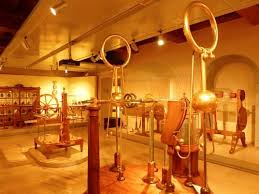
The Medici Collections
The museum’s first floor has nine rooms that are devoted to the Medici Collections, which date from the 15th century through the 18th century.
This permanent exhibition includes all of Galileo’s unique artifacts, among which are his only two extant telescopes and the framed objective lens from the telescope with which he discovered the Galilean moons of Jupiter.
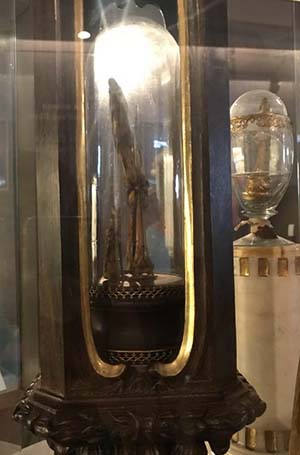
The exhibition also houses a variety of thermometers, a collection of terrestrial and celestial globes, and Santucci’s Armillary Sphere.
This giant Ptolemaic armillary sphere was an attention grabber in the middle of an exhibit room, considering it is the largest existing armillary sphere and its captivating gold surface.
The Lorraine Collection
The second floor of the museum houses instruments and various experimental apparatus collected by the Lorraine dynasty. These different pieces and artifacts on this floor display the contribution that Italy made to the progress of electricity, electromagnetism, and chemistry.
Wax models and rudimentary machines that illustrate the fundamental physical laws dotted the exhibit. The museum also has an interactive exhibit that gives hands-on experience with the inner-workings of these simplistic machines.
Artifacts about Galileo
Some of the most striking artifacts during our tour were beautiful naval charts that dated back to the 1500s. It was amazing to see how well all of these artifacts were preserved, and how each held a very practical and uniquely exquisite quality about them.
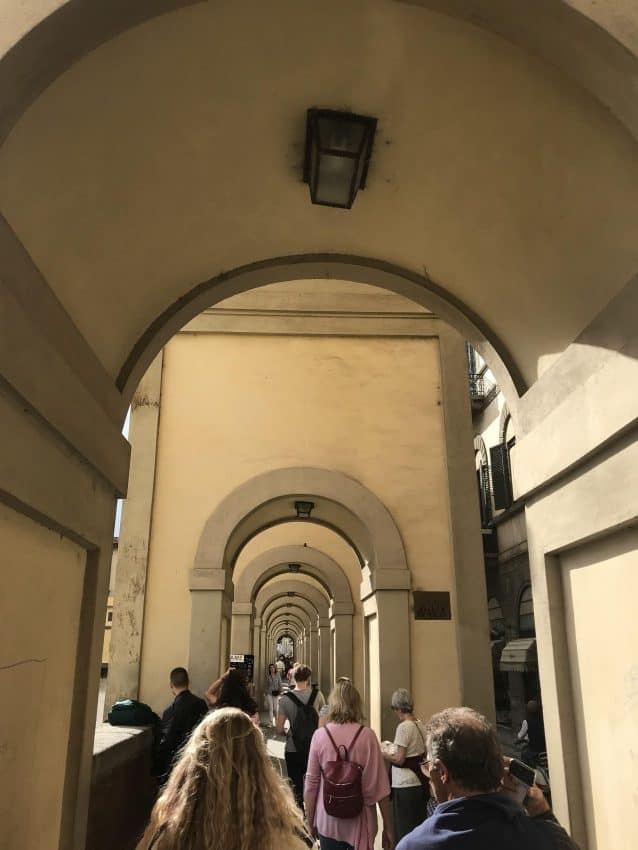
The museum is dotted with various medical instruments, astrolabes, and many different maps that all catch the eye. The real shocker in the museum is the exhibit that holds a couple of Galileo’s own fingers.
A few of Galileo’s fingers are preserved inside the museum, which seems equally strange and fascinating considering the age of the instruments inside the exhibitions.
Afternoon Snack
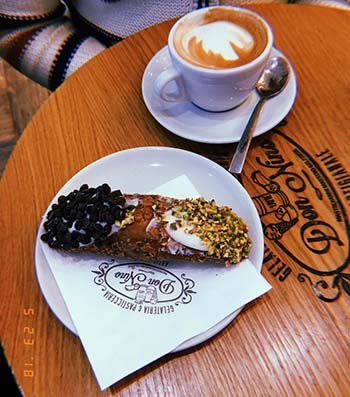
We finished off our day at the Museo Galileo with a perfect snack found at a cafe down the street: a cappuccino and a cannoli.
While we thought our day was going to be unsuccessful due to extensive ticket lines, we made the most of it by checking out a slightly more unconventional museum and finishing the day with a sweet treat.
More Information on Museo Galileo
The Museo Galileo is open every day of the week, and it is located in the Piazza dei Guidici in Florence, Italy.
A ticket to the museum costs € 11,00.
- Vermont: History, Horses, & the Arts - September 6, 2018
- Stops in NW Arkansas for a Hungry Outdoorsman - September 5, 2018
- The Best Guide to River Cruising in Europe & the USA - September 4, 2018



